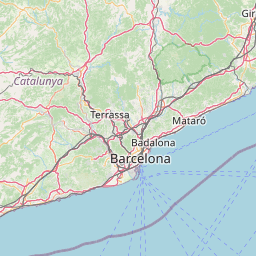Vivienda productiva: casa taller
Tutor/a - Director/a
Estudiant
Galán Parra, Diana Gabriela
Tipus de document
Projecte Final de Màster Oficial
Data
2023
rights
Accés obert
Editorial
Universitat Politècnica de Catalunya
UPCommons
Resum
La tesis se centra el estudio de la vivienda productiva, que surge como una respuesta de flexibilidad y adaptabilidad a las exigencias contemporáneas. El análisis de la misma se da en base a la curiosidad por descubrir como la arquitectura recupera el hecho de vivir y trabajar en un mismo espacio.
Esta exploración empieza por conocer el área de estudio, en este caso la ciudad de Barcelona, que, desde sus inicios, por la ubicación geográfica y su cercanía al mar, ha tenido un gran flujo productivo y comercial, desarrollando grupos de obreros y artesanos que fueron de gran influencia por su actividad laboral. Desde la antigüedad, la vivienda productiva era un punto fundamental tanto de la convivencia social como de la familiar, pero a raíz de los avances tecnológicos y la globalización, se empezó a separar estas actividades. No obstante, en la actualidad esta tipología es recuperada como base de una resiliencia social, laboral y comunitaria.
El hecho de vivir y trabajar en un mismo lugar aporta flexibilidad y adaptación a las nuevas formas de vivir, las nuevas estructuras familiares, y la consolidación del trabajo remoto.
En esta investigación, se aborda las particularidades que distinguen a las viviendas productivas desde dos perspectivas. La primera, se centra en el análisis de casos de estudio seleccionados dentro de la ciudad, empleando una revisión comparativa para extraer las características de diseño y distribución interior que definen a este tipo de viviendas.
Por otro lado, mediante una exploración a pie de calle, se investiga y reconoce esta tipología desde su aspecto exterior. Siendo de suma importancia la comunicación entre el espacio interior y la calle, esta relación mutua beneficia el contexto de una comunidad urbana saludable, y el dinamismo y la diversidad que esta interacción le da a la vivienda.
The thesis focuses on the study of productive housing, which emerges as a response to contemporary demands for flexibility and adaptability. The analysis is driven by curiosity about how architecture reclaims the concept of living and working in the same space.
This exploration begins with an understanding of the study area, in this case, the city of Barcelona, which, due to its geographical location and proximity to the sea, has a rich history of productivity and commerce, giving rise to groups of workers and artisans who had a significant influence due to their work activities. In ancient times, productive housing was a crucial point for both social and family life. However, with technological advancements and globalization, these activities began to separate. Nevertheless, today, this typology is being rediscovered as the foundation for social, labor, and community resilience.
Living and working in the same place provide flexibility and adaptation to new ways of living, evolving family structures, and the rise of remote work.
This research addresses the specific characteristics that distinguish productive housing from two perspectives. The first one focuses on the analysis of selected case studies within the city, using a comparative review to extract design and interior distribution features that define this type of housing.
On the other hand, through on-site exploration, this typology is investigated and recognized from its exterior appearance. The communication between the interior space and the street is of utmost importance, as this mutual relationship benefits the context of a healthy urban community and the dynamism and diversity that this interaction brings to housing.
Localització















